Partial Discharge Characteristics of C3F7CN Gas Mixture Using the UHF Method
Abstract
1. Introduction
2. Electrode Design and Maximum Electric Field (Emax) Simulations
3. Design of Experiment
3.1. Experimental Setup
3.2. PD Test Procedure
4. PDIV and PDEV Characteristics
4.1. Hemispherical Rod-Plane Configuration
4.2. Plane-Plane Configuration
5. PRPD Patterns
5.1. Hemispherical Rod-Plane Configuration
5.2. Plane-Plane Configuration
6. Discussion
- Voltage magnitude was observed to affect the PD activity in the negative half-cycle started at the 100% PDIV level for the C3F7CN/CO2 gas mixture at 1 bar. The PD activity shifted to the positive half-cycle when the gas medium was subjected to 200% PDIV and under higher pressures. The discharge process is dependent on the insulating gas tested. This observation was found for all tests under different pressures with the needle protrusion on the HV conductor. For a protrusion on the conductor, at lower voltage magnitudes, CO2 was ionised first and resulted in the UHF signals measured in negative half-cycle, while C3F7CN participated in the discharge process when voltage magnitude was increased. It was observed that the increasing voltage magnitude can also change the signal parameters (amplitude and phase).
- Field uniformity was observed to affect the 3-stage transition phase of the gas mixture. For f less than 0.0033, the transition phase occurred for almost all the investigated pressures. Once this critical f value was exceeded for the PPE-5 mm configuration (f = 0.0043), the C3F7CN/CO2 gas mixture was able to suppress the PD activity more effectively than SF6 as shown by the PDIV/EV values. Comparatively higher PDIV/EV values for the C3F7CN/CO2 gas mixture will not have 3-phase transition because both C3F7CN and CO2 actively participated in the discharge activity. This demonstrates that for passive equipment with quasi-uniform fields, a 20% C3F7CN/80% CO2 mixture can suppress PDs as effectively as SF6 and can be considered as a viable retro-fill solution.
7. Conclusions
Author Contributions
Funding
Data Availability Statement
Conflicts of Interest
References
- Climate Action—Kyoto 2nd Commitment Period (2013–2020). Available online: https://ec.europa.eu/clima/policies/strategies/progress/kyoto_2_en#:~:text=This%20period%20bridges%20the%20gap,to%20make%20further%20emissions%20cuts (accessed on 2 October 2022).
- IPCC. Climate Change 2021: The Physical Science Basis; Contribution of Working Group I to the Sixth Assessment Report of the Intergovernmental Panel on Climate Change; Cambridge University Press: Cambridge, UK; New York, NY, USA, 2021. [Google Scholar]
- Kieffel, Y.; Irwin, T.; Ponchon, P.; Owens, J. Green Gas to Replace SF6 in Electrical Grids. IEEE Power Energy Mag. 2016, 14, 32–39. [Google Scholar] [CrossRef]
- Kieffel, Y. Characteristics of g3—An alternative to SF6. In Proceedings of the International Conference on Dielectrics, Montpellier, France, 3–7 July 2016; pp. 880–884. [Google Scholar]
- Owens, J.G. Greenhouse Gas Emission Reductions through use of a Sustainable Alternative to SF6. In Proceedings of the IEEE lectrical Insulation Conference, Montreal, Canada, 19–22 July 2016; pp. 535–538. [Google Scholar]
- Loizou, L.; Chen, L.; Liu, Q.; Cotton, I.; Waldron, M.; Owens, J. Technical Viability of Retro-filling C3F7CN/CO2 Gas Mixtures in SF6-designed Gas Insulated Lines and Busbars at Transmission Voltages. IEEE Trans. Power Deliv. 2020, 35, 2394–2402. [Google Scholar] [CrossRef]
- IEC 60060-1:2010; High-Voltage Test Techniques—Part 1: General Definitions and Test Requirements. IEC: Geneva, Switzerland, 2010.
- National Grid and Hitachi Energy Announce World First Collaboration to Replace SF6 in Existing High-Voltage Equipment. Available online: https://www.nationalgrid.com/national-grid-and-hitachi-energy-announce-world-first-collaboration-replace-sf6-existing-high (accessed on 2 October 2022).
- Wang, G.; Kim, W.H.; Kil, G.; Kim, S.W.; Jung, J.R. Green Gas for a Grid as An Eco-Friendly Alternative Insulation Gas to SF6: From the Perspective of Partial Discharge Under AC. Appl. Sci. 2019, 9, 651. [Google Scholar] [CrossRef]
- Zhang, B.; Uzelac, N.; Cao, Y. Fluoronitrile/CO2 mixture as an eco-friendly alternative to SF6 for medium voltage switchgears. IEEE Trans. Dielectr. Electr. Insul. 2018, 25, 1340–1350. [Google Scholar] [CrossRef]
- Loizou, L.; Chen, L.; Liu, Q.; Fernandez Bautista, R.; Seltzer-Grant, M. Evaluation of UHF Partial Discharge Measurements for SF6 and 20% C3F7CN/80% CO2 Gas Mixture. In Proceedings of the 3rd International Conference on Dielectrics (ICD), Valencia, Spain, 5–31 July 2020; pp. 818–821. [Google Scholar]
- Arora, R.; Wolgang, M. High Voltage and Electrical Insulation Engineering; John Wiley & Sons: Hoboken, NJ, USA, 2011. [Google Scholar]
- Prabakaran, T.; Usa, S.; Santosh Kumar, A. Analysis of Partial Discharge Signals in 420 kV Gas Insulated Substation. In Proceedings of the 1st International Conference on Condition Assessment Techniques in Electrical Systems (CATCON), Kolkata, India, December, 6–8 December 2013; pp. 249–254. [Google Scholar]
- Metwally, I.A. Status review on partial discharge measurement techniques in gas-insulated switchgear/lines. Electr. Power Syst. Res. 2004, 69, 25–36. [Google Scholar] [CrossRef]
- Wang, G.; Kil, G.S. Measurement and Analysis of Partial Discharge Using an Ultra-high Frequency Sensor for Gas Insulated Structures. Metrol. Meas. Syst. 2017, 24, 515–524. [Google Scholar] [CrossRef]
- De Kock, N.; Coric, B.; Pietsch, R. UHF PD detection in gas-insulated switchgear—Suitability and sensitivity of the UHF method in comparison with the IEC 270 method. IEEE Electr. Insul. Mag. 1996, 12, 20–26. [Google Scholar] [CrossRef]
- Li, X.; Liu, W.; Xu, Y.; Ding, D. Discharge characteristics and detectability of metal particles on the spacer surface in gas-insulated switchgears. IEEE Trans. Power Deliv. 2021, 37, 187–196. [Google Scholar] [CrossRef]
- He, Y.; Li, M.; Meng, Z.; Chen, S.; Huang, S.; Hu, Y.; Zou, X. An overview of acoustic emission inspection and monitoring technology in the key components of renewable energy systems. Mech. Syst. Signal Process 2021, 148, 107146. [Google Scholar] [CrossRef]
- Darwish, A.; Refaat, S.S.; Toliyat, H.A.; Abu-Rub, H. On the electromagnetic wave behavior due to partial discharge in gas insulated switchgears: State-of-art review. IEEE Access 2019, 7, 75822–75836. [Google Scholar] [CrossRef]
- Han, X.; Zhang, X.; Guo, R.; Wang, H.; Li, J.; Li, Y.; Zhao, M. Partial Discharge Detection in Gas-Insulated Switchgears Using Sensors Integrated With UHF and Optical Sensing Methods. IEEE Trans. Dielectr. Electr. Insul. 2022, 29, 2026–2033. [Google Scholar] [CrossRef]
- COMSOL—Finite Element Mesh Refinement. Available online: https://www.comsol.com/multiphysics/mesh-refinement (accessed on 2 October 2022).
- Ultra High Frequency Detection for Partial Discharge. Available online: https://www.hvpd.co.uk/products/uhf-barrier-sensor/ (accessed on 2 October 2022).
- HVPD Kronos® Spot Tester. Available online: https://www.hvpd.co.uk/products/kronos-spot-tester/ (accessed on 2 October 2022).
- Boeck, W.; Albiez, M.; Bengtsson, T.; Diessner, A.; Feger, R.; Feser, K.; Girodet, A.; Gulski, E.; Hampton, B.F.; Hücker, T.; et al. Partial Discharge Detection System for GIS: Sensitivity Verification for the UHF Method and the Acoustic Method. Cigre Electra 1999, 183, 77–87. [Google Scholar]
- IEC 62478:2016; High Voltage Test Techniques—Measurement of Partial Discharges by Electromagnetic and Acoustic Methods. IEC: Geneva, Switzerland, 2016.
- Loizou, L.; Chen, L.; Liu, Q.; Waldron, M. Lightning Impulse Breakdown Characteristics of SF6 and 20% C3F7CN/80% CO2 Mixture under Weakly Non-Uniform Electric Fields. IEEE Trans. Dielectr. Electr. Insul. 2020, 27, 848–856. [Google Scholar] [CrossRef]
- Loizou, L.; Chen, L.; Liu, Q. A Comparative Study on the Breakdown Characteristics of SF6 and 20% C3F7CN/80% CO2 Gas Mixture in a Coaxial Configuration. In Proceedings of the IEEE Conference on Electrical Insulation and Dielectric Phenomena (CEIDP), Washington, DC, USA, 20–23 October 2019; pp. 234–237. [Google Scholar]
- Haddad, A.; Warne, D. Advances in High Voltage Engineering, 1st ed.; IET: London, UK, 2004. [Google Scholar]
- Pearson, J.S.; Farish, O.; Hampton, B.F.; Judd, M.D.; Templeton, D. Partial Discharge Diagnostics for Gas Insulated Substations. IEEE Trans. Dielectr. Electr. Insul. 1995, 2, 893–905. [Google Scholar] [CrossRef]
- Richard, E.J.; Lira, C.T. Chapter 15 Phase Equilibria in Mixtures by an Equation of State. In Introductory Chemical Engineering Thermodynamics, 2nd ed.; Prentice Hall: Upper Saddle River, NJ, USA, 2012. [Google Scholar]
- IEC 62271-203:2011; High-Voltage Switchgear and Controlgear—Gas-Insulated Metal-Enclosed Switchgear for Rated Voltages above 52 kV. IEC: Geneva, Switzerland, 2011.
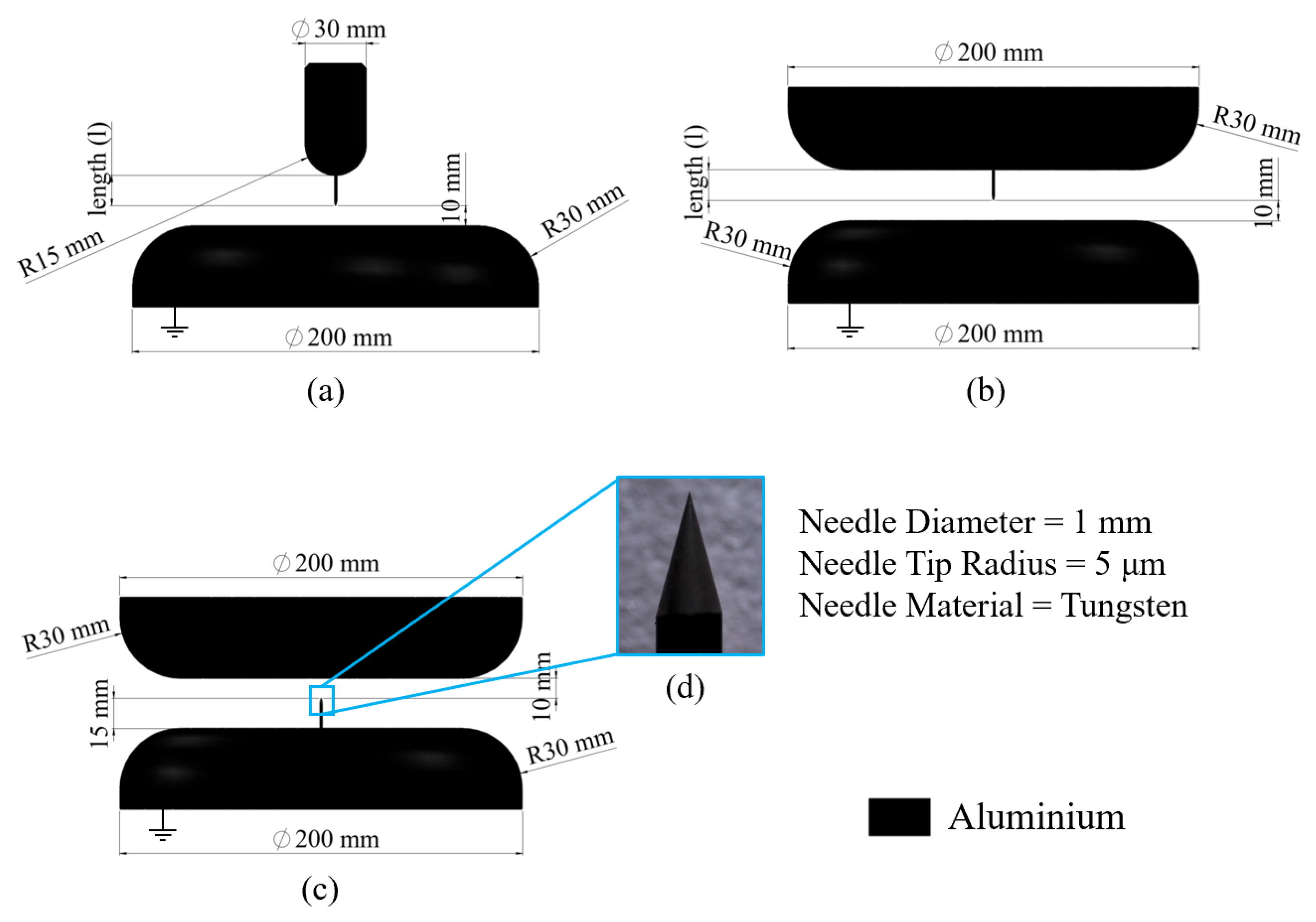
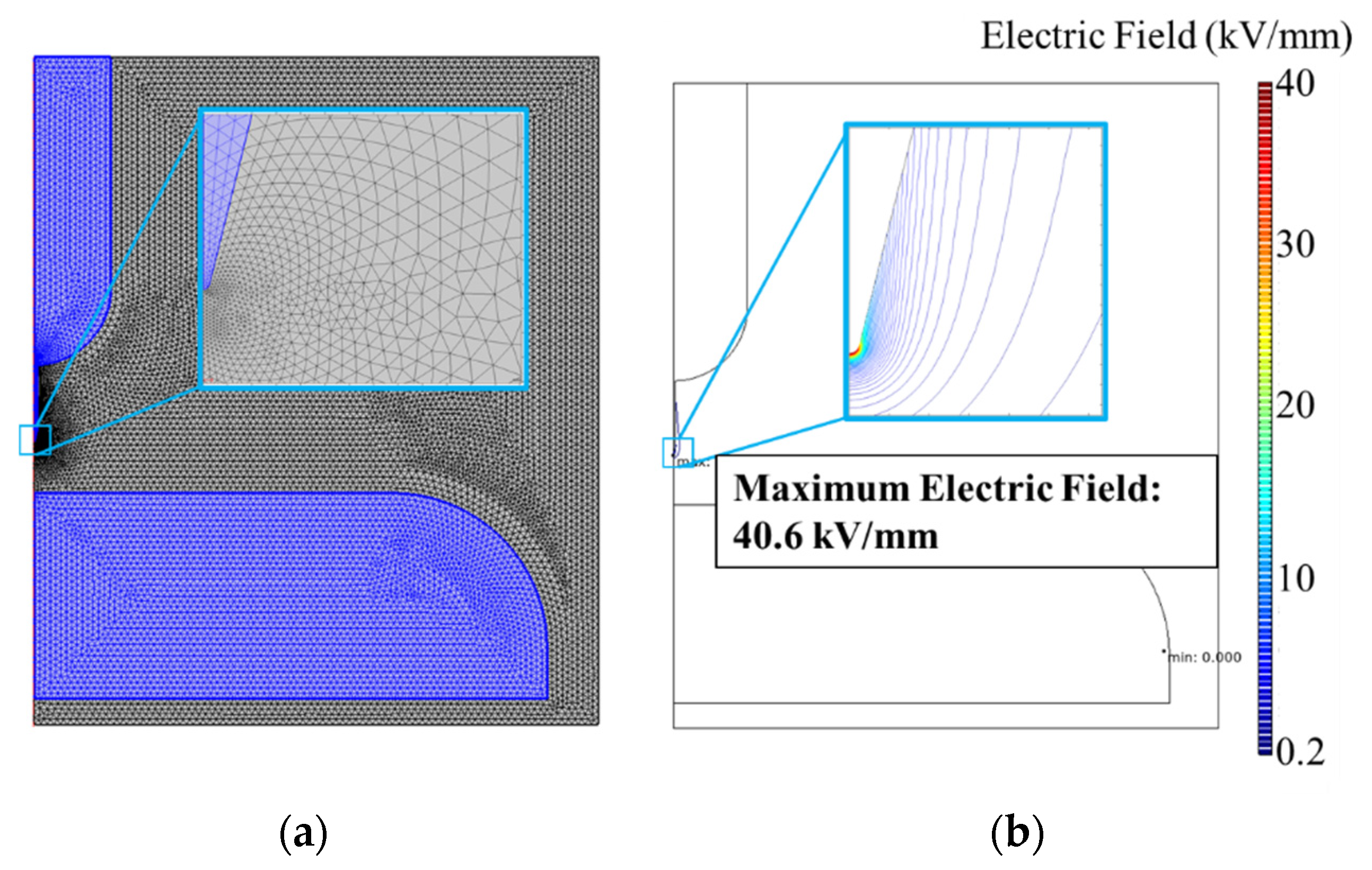

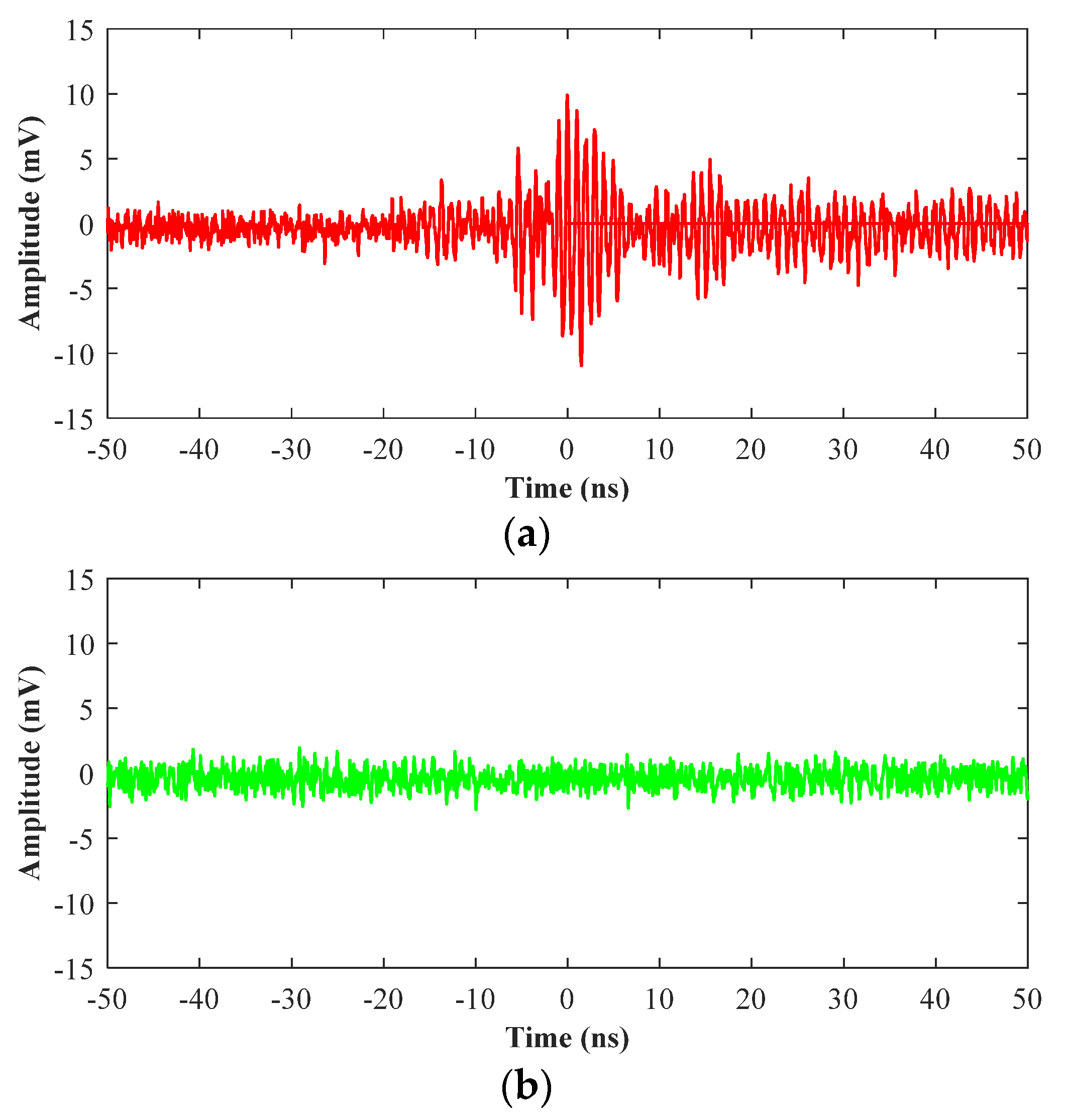
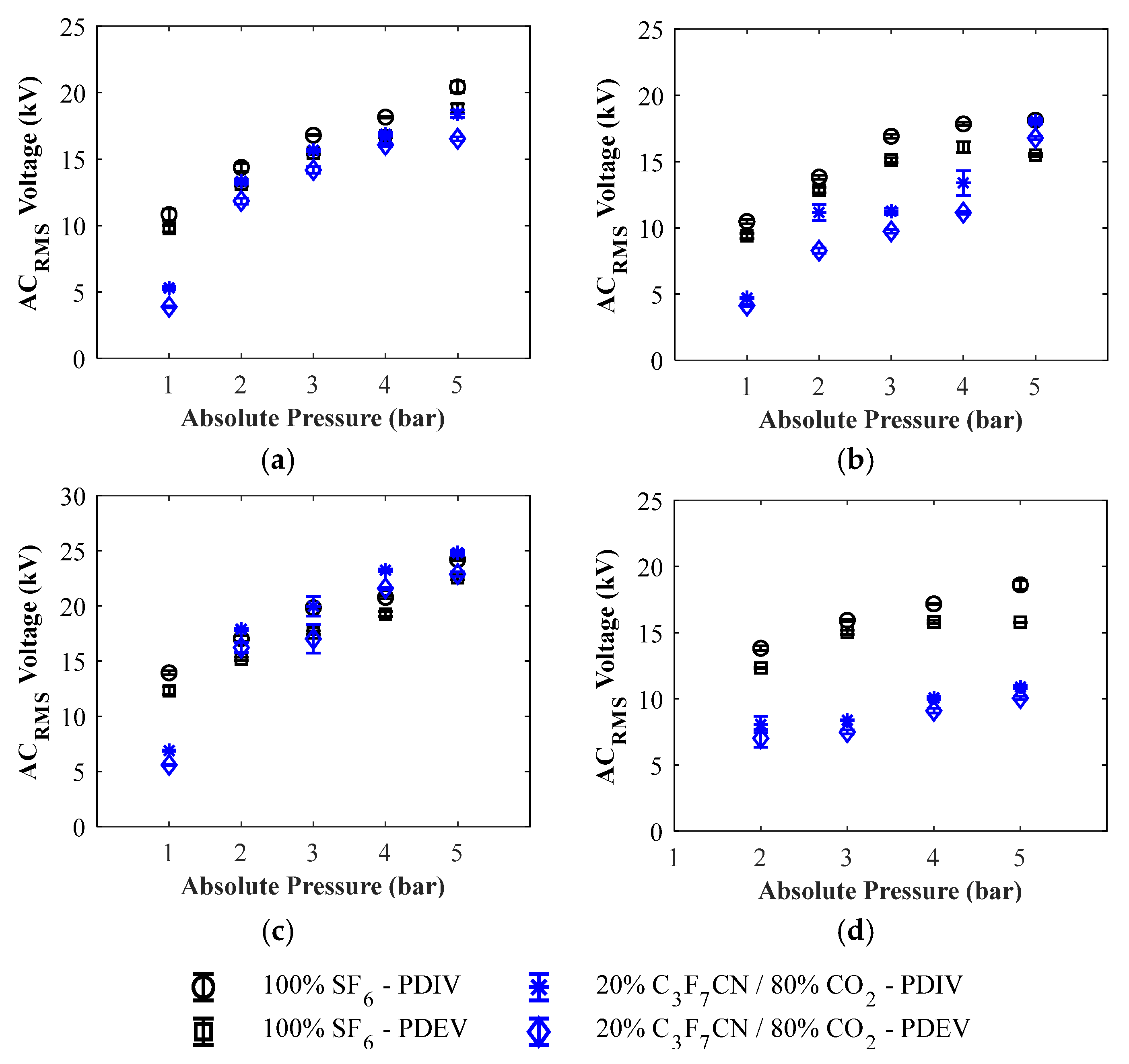

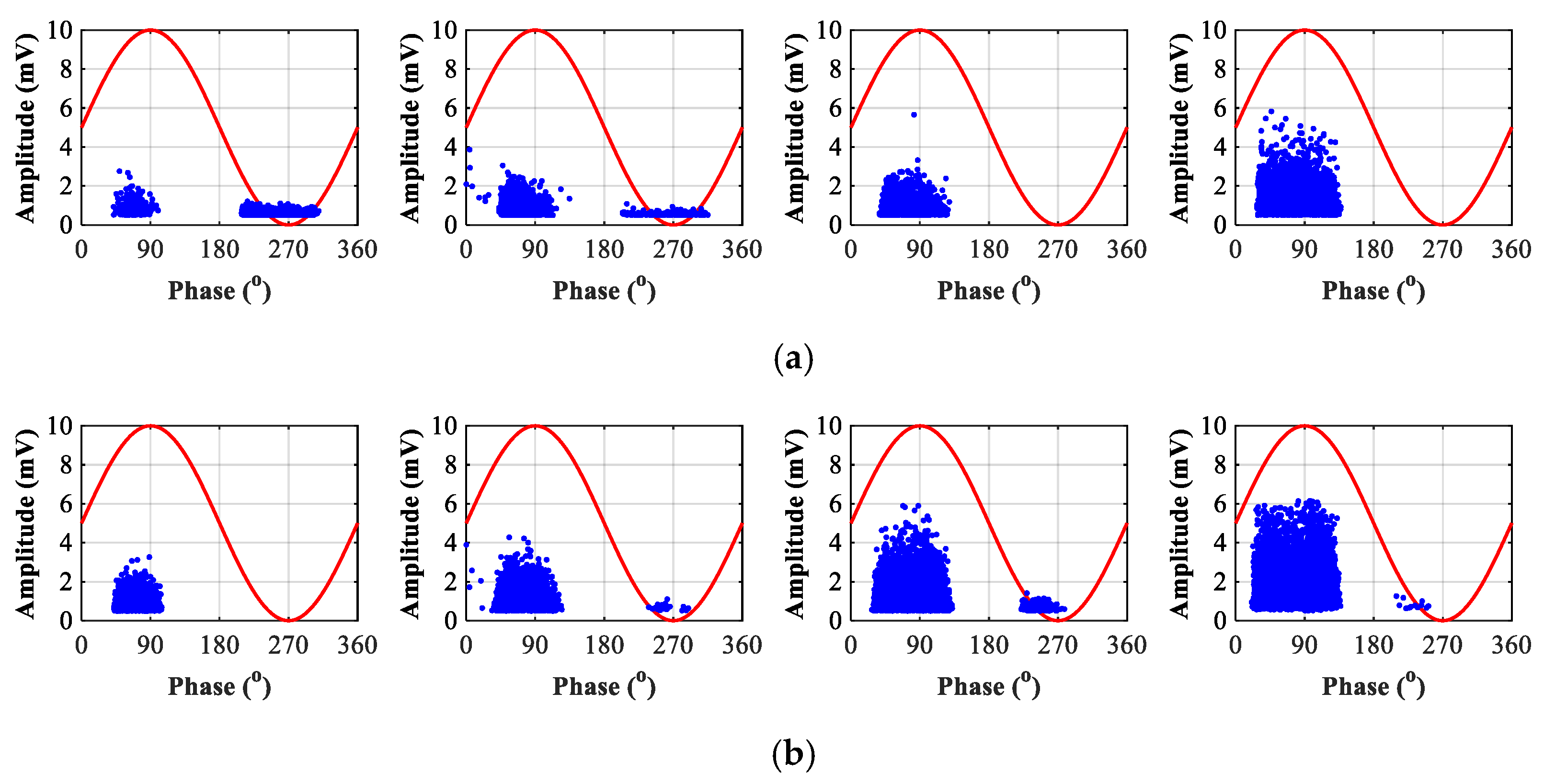


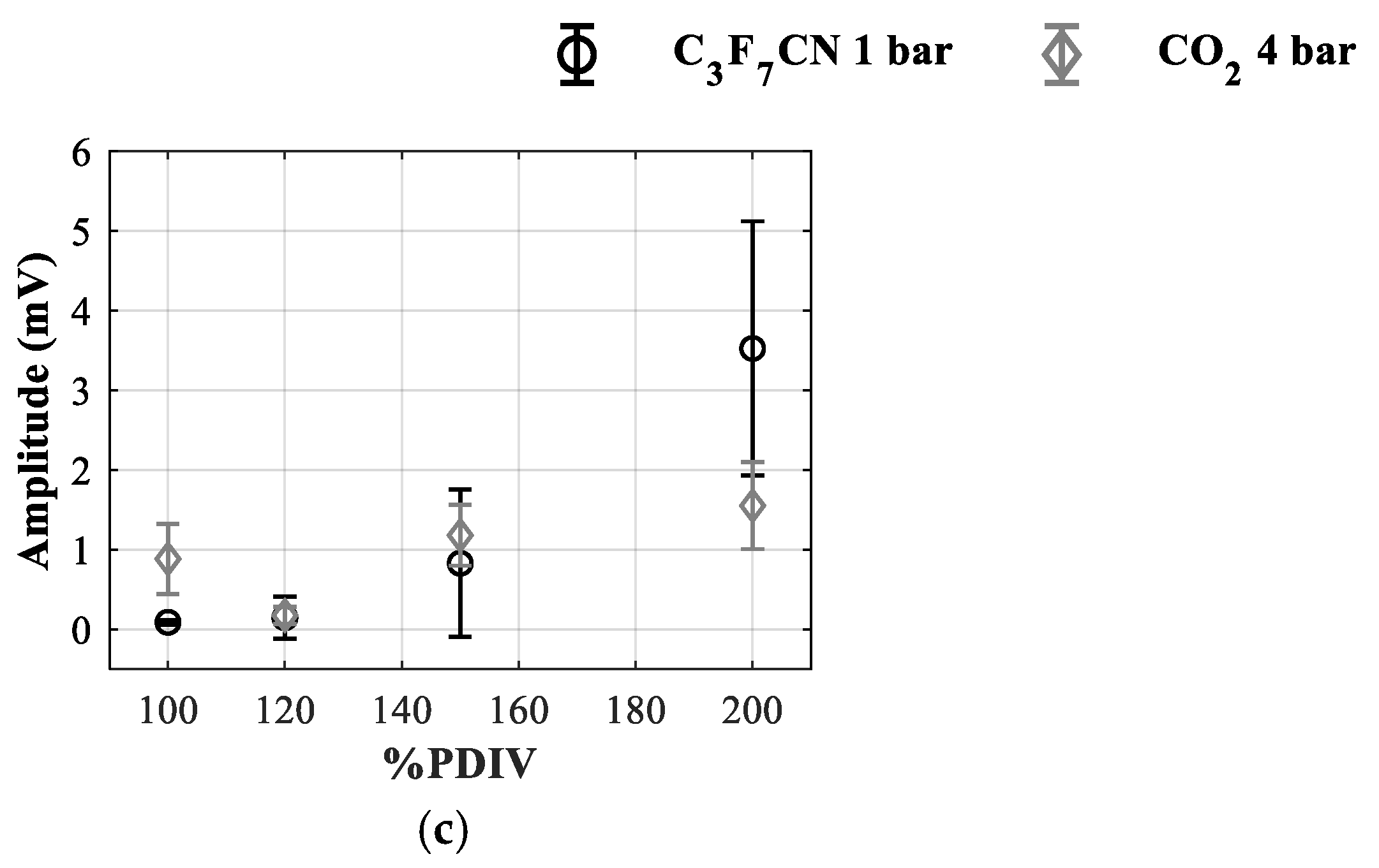
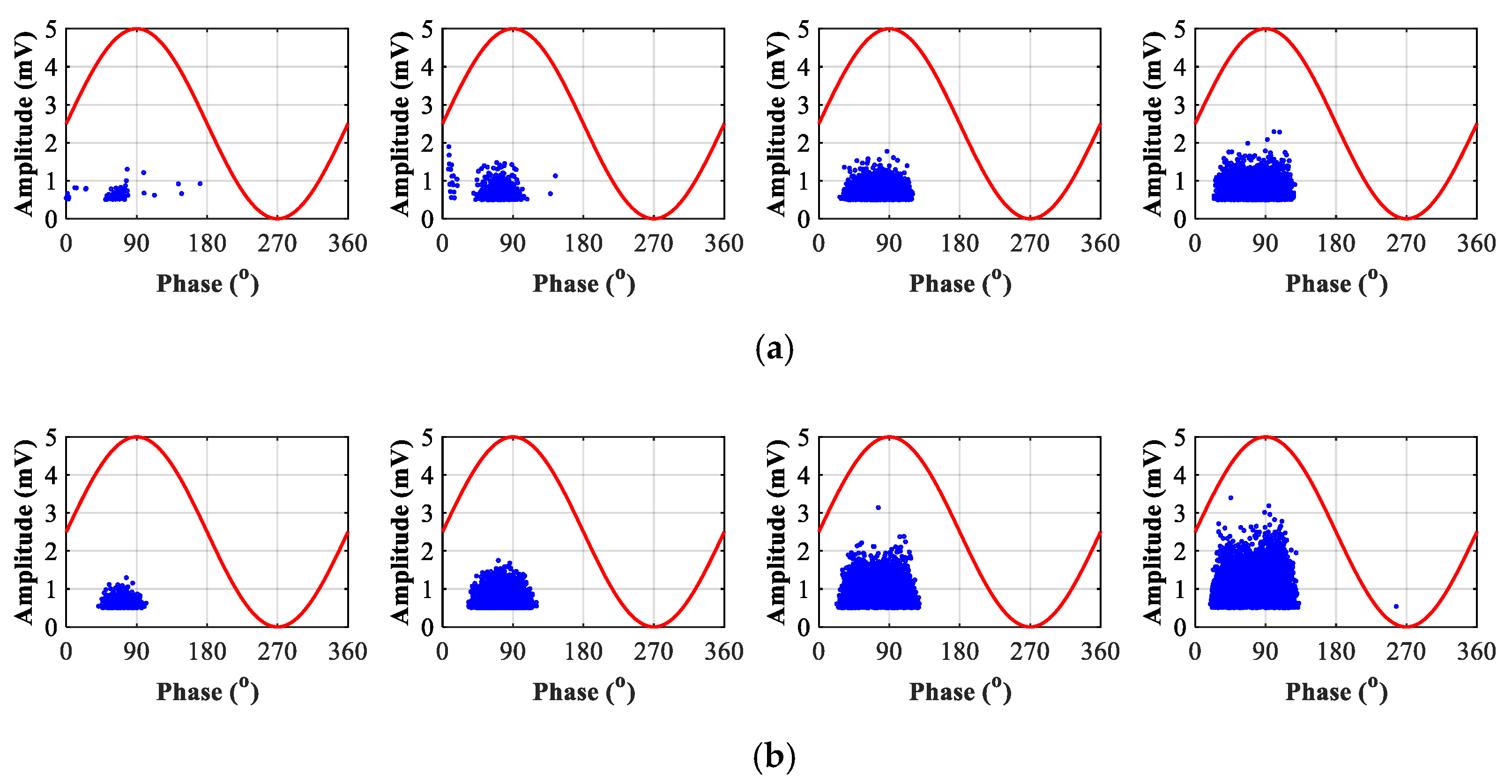

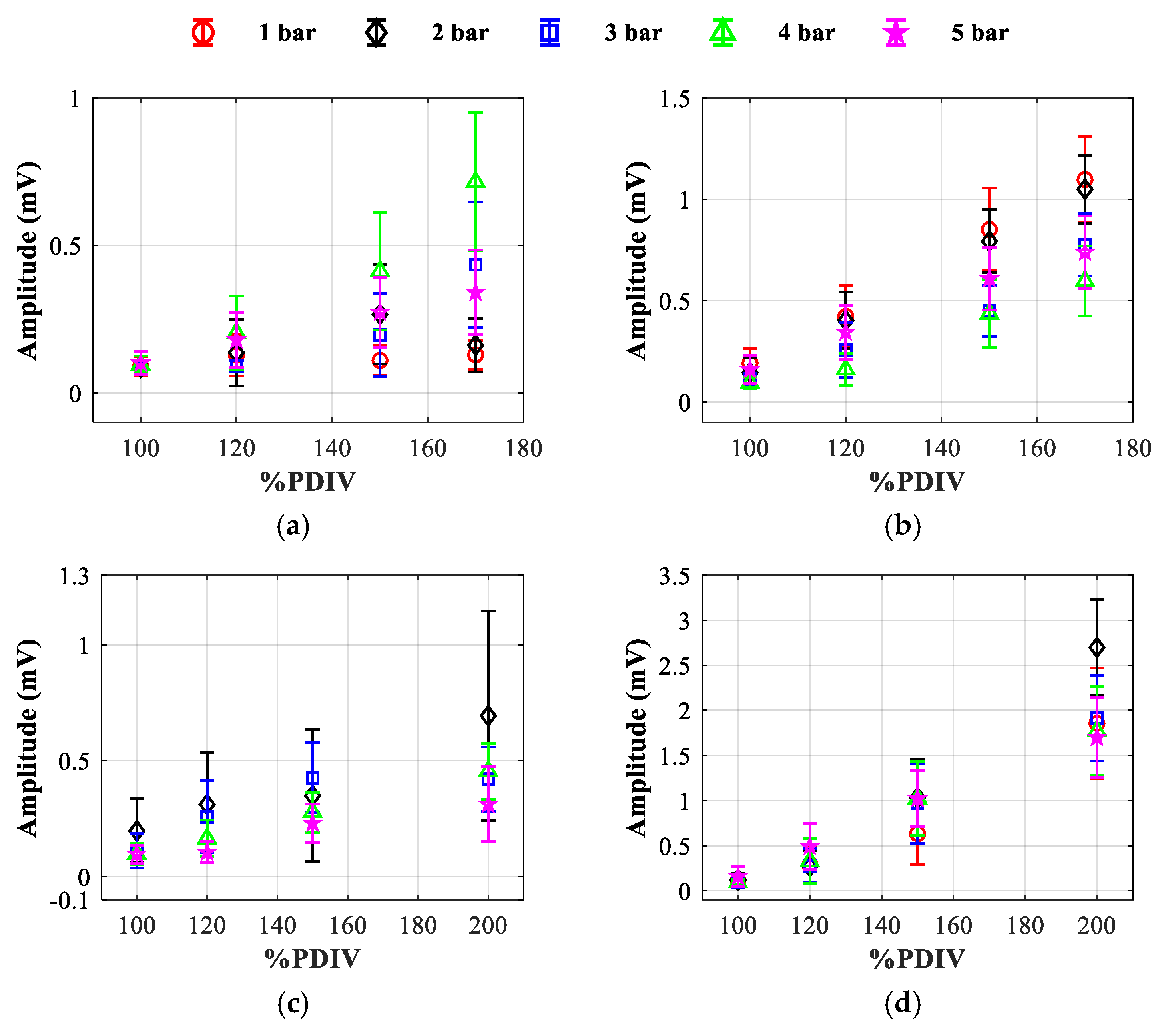
| Electrode Configuration | Abbreviation | Needle Length (mm) | Maximum Electric Field, Emax (kV/mm) | Field Utilisation Factor, f |
|---|---|---|---|---|
| Rod-plane (POC) | RPC-5 mm | 5 | 30.04 | 0.0033 |
| RPC-15 mm | 15 | 40.55 | 0.0025 | |
| Plane-plane (POC) | PPC-5 mm | 5 | 23.14 | 0.0043 |
| PPC-15 mm | 15 | 34.58 | 0.0029 | |
| Plane-plane (POE) | PPE-15 mm | 15 | 34.58 | 0.0029 |
Publisher’s Note: MDPI stays neutral with regard to jurisdictional claims in published maps and institutional affiliations. |
© 2022 by the authors. Licensee MDPI, Basel, Switzerland. This article is an open access article distributed under the terms and conditions of the Creative Commons Attribution (CC BY) license (https://creativecommons.org/licenses/by/4.0/).
Share and Cite
Loizou, L.; Han, Q.; Chen, L.; Liu, Q.; Waldron, M.; Wilson, G.; Bautista, R.F.; Seltzer-Grant, M. Partial Discharge Characteristics of C3F7CN Gas Mixture Using the UHF Method. Energies 2022, 15, 7731. https://doi.org/10.3390/en15207731
Loizou L, Han Q, Chen L, Liu Q, Waldron M, Wilson G, Bautista RF, Seltzer-Grant M. Partial Discharge Characteristics of C3F7CN Gas Mixture Using the UHF Method. Energies. 2022; 15(20):7731. https://doi.org/10.3390/en15207731
Chicago/Turabian StyleLoizou, Loizos, Qinghua Han, Lujia Chen, Qiang Liu, Mark Waldron, Gordon Wilson, Roberto Fernandez Bautista, and Malcolm Seltzer-Grant. 2022. "Partial Discharge Characteristics of C3F7CN Gas Mixture Using the UHF Method" Energies 15, no. 20: 7731. https://doi.org/10.3390/en15207731
APA StyleLoizou, L., Han, Q., Chen, L., Liu, Q., Waldron, M., Wilson, G., Bautista, R. F., & Seltzer-Grant, M. (2022). Partial Discharge Characteristics of C3F7CN Gas Mixture Using the UHF Method. Energies, 15(20), 7731. https://doi.org/10.3390/en15207731









